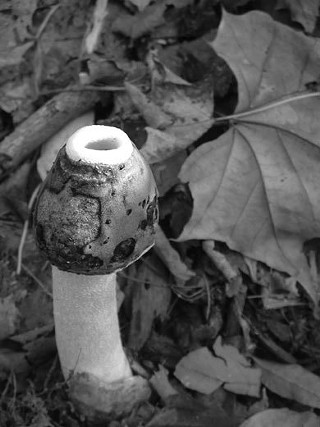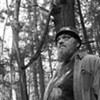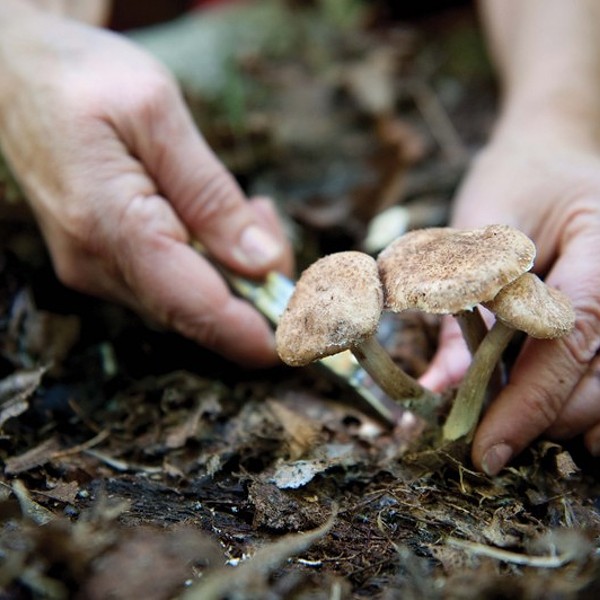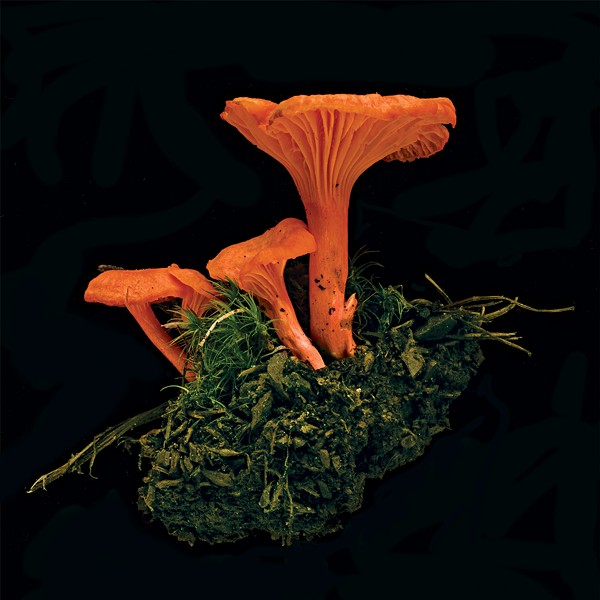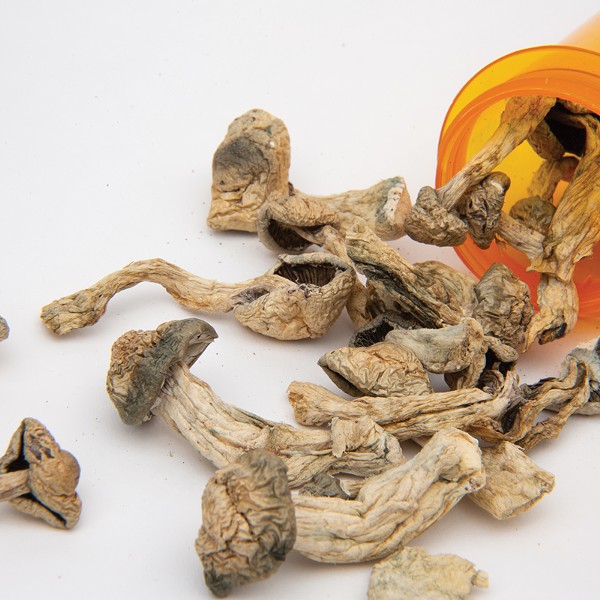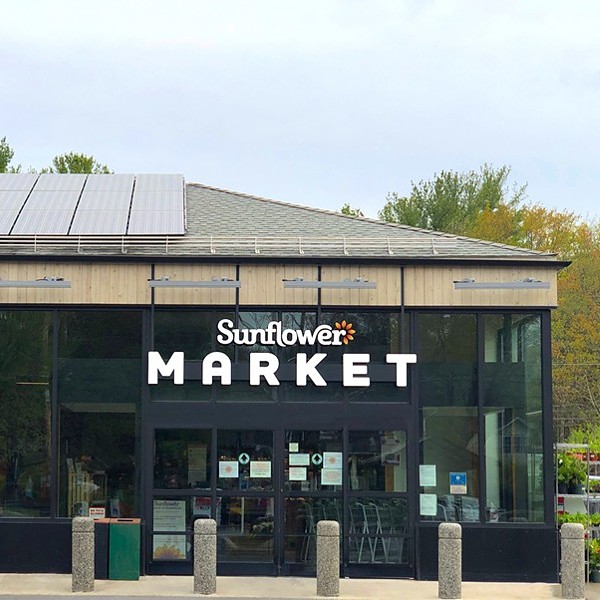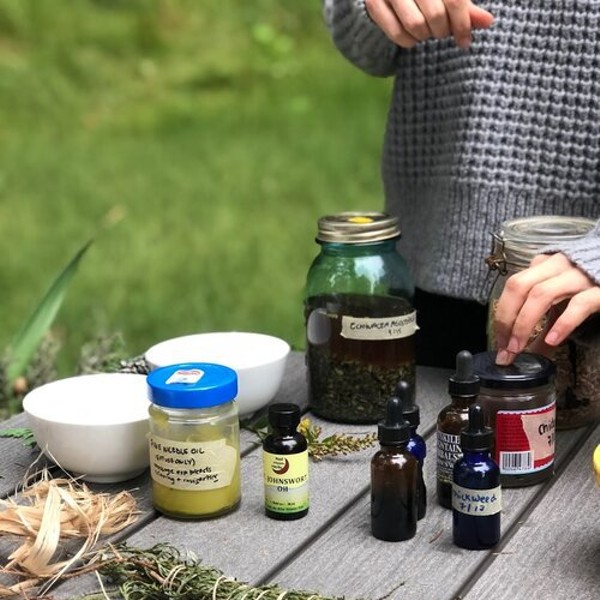There is a common conception that picking and eating wild mushrooms is a dangerous—perhaps even fatal—pursuit. Not according to John Boyle, a self-trained mushroom expert with whom I took a class several years ago.
“Actually, there’s no danger,” he said simply, over a slice of pizza in the Greene County hamlet of Cairo. “You don’t pick a mushroom unless you know it’s safe.”
“But what about all the stories of people getting sick and dying from eating a bad mushroom?” I asked.
“It’s not a gamble,” he said. “If you don’t know the mushroom is safe you have no business eating it.”
Fair enough, I thought. And the best way to learn about wild mushrooms? Slowly. From someone who knows.
Boyle began studying wild plants and mushrooms in the late 1960s. He learned how to live off the land as a protective measure in the days when he solo-trekked five days deep into the Adirondack Mountains. Slugs, he learned, are high in protein. “Oh they’re edible all right…but who would want to?”
These days, if you want to learn about wild plants and mushrooms, you begin by going to a library and choosing from a huge selection of specialized books and guides. When Boyle’s studies began, however, resources were scarce. “Back then if you wanted to know whether a plant was edible, you found somebody from the Depression. People in the country during the Depression knew how to use wild plants.” He would search local taverns for these wise old-timers and tease out their recipes.
Boyle and I flipped through the pages of a mushroom book on the table between us. A mushroom, Boyle explained, is like an apple on a tree: it is the fruiting body of the mycelium. The mycelium looks like white mesh and is found wherever a mushroom grows—under bark or among rotten leaves.
When the environment is favorable, it fruits. Mycelia may connect entire forests, and some mushrooms have symbiotic relationships with plants and trees—current studies suggest a tree at one side of a forest in need of nutrients from the other side may be able to get them through the hidden mycelial web.
We came across a photograph of a Shaggy Mane, a mushroom that has been fascinating me for years, although I’ve only seen it in photographs. A member of the Inky Cap family, it looks like a white-haired creature of Jim Henson’s invention. Even more remarkable is that as a Shaggy Mane ages it dissolves into a pool of black liquid. It’s edible, but must be harvested and preserved in a particular way to avoid the inky effect.
As Boyle explained, the process of mushroom identification is not guesswork. There is a precise system of rules including cap, stem, and spore analysis; the pattern a spore print makes; which kind of wood or soil the mushroom grows on; and its texture. With mushroom hunting, two-out-of-three won’t do: “Mother Nature does not put warning labels on her produce.”
After pizza we visited Boyle’s house in Durham to see how he propagates mushrooms. As we drove he described one simple process, in which you find a desirable mushroom in the forest, cut a small piece, and put it in a Petri dish with agar and nutrients. Then when the mycelium grows, you transfer it to an environment in which it will fruit. Anyone can learn to grow a crop of wild mushrooms in a corner of the yard, in an unused forest, or even in a basement; John taught himself how to propagate mushrooms decades ago.
The walls in John’s study are covered from floor to ceiling with books. The top shelf holds binders filled with slides of mushrooms he’s photographed, and he has every issue of Mushroom: The Journal of Wild Mushrooming ever printed. One entire shelf is filled with mushroom books, and as we talked, he pulled down books to highlight specific points. One showed how to make paper from mushrooms, and another how to make mushroom dyes. “There is always more to learn,” John said.
He has two fridges in his kitchen. One has a drawer stacked with round Petri dishes, each of which is clearly labeled with the Latin name of the mushroom that will fruit from the cultured mycelium. The freezer is stuffed with sealed bags of harvested wild mushrooms. John pulled out a bag of Shaggy Manes and offered it to me. Beneath the clear plastic I saw furry cream-colored flesh.
Cook it frozen, John said; don’t defrost it. Reduce the liquid. Add eggs. It makes a great omelet. I trust his recipe, especially after having seen photographs of him teaching at the Culinary Institute.
John’s classes—which range from “Cooking with Wild and Gourmet Mushrooms” to “Growing Mushrooms Outdoors for Profit”—fill up faster each year. Americans, he explained, are getting beyond their mycophobia (fear of mushrooms). Eastern and Central Europeans are more familiar with mushroom hunting—even children know how to identify and gather. “Central Europeans will eat almost anything out there, mushroom-wise. They love mushrooms. Some of the mushrooms they eat a Billy-goat couldn’t get away with.” This is because they have particular methods and recipes (involving pickling, boiling, or drying) that remove poisons and disagreeable tastes from each mushroom.
The flavor of a mushroom cultivated indoors does not begin to compare to the flavor of those that have been grown outside. John frowns when he describes the deplorable state in which mushrooms are sold at grocery stores—wild mushrooms can’t be left out in the heat, and they can’t stand to be wrapped in plastic. Mushrooms don’t travel well, but a mushroom-grower can always sell to local groceries because there aren’t many local suppliers.
Back at my house, I opened the bag of frozen Shaggy Manes John had given me. As they simmered, the kitchen filled with a sweet and deep aroma. I let them reduce; then I tasted them.
After one buttery bite I understood why John had scoffed when I’d asked if he’d like mushrooms on his slice at the pizza shop.
To receive John Boyle’s class schedule (Boyle will lead classes on mayflowers this month and mushroom identification and growing in June), mushroom kit price list, and e-newsletter, phone (518) 239-8039, or e-mail [email protected].







